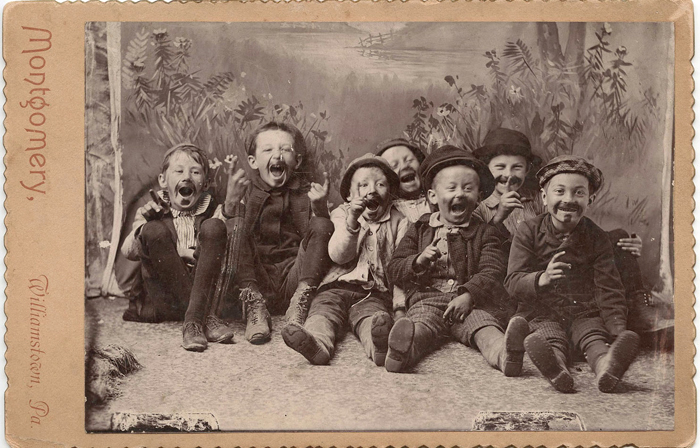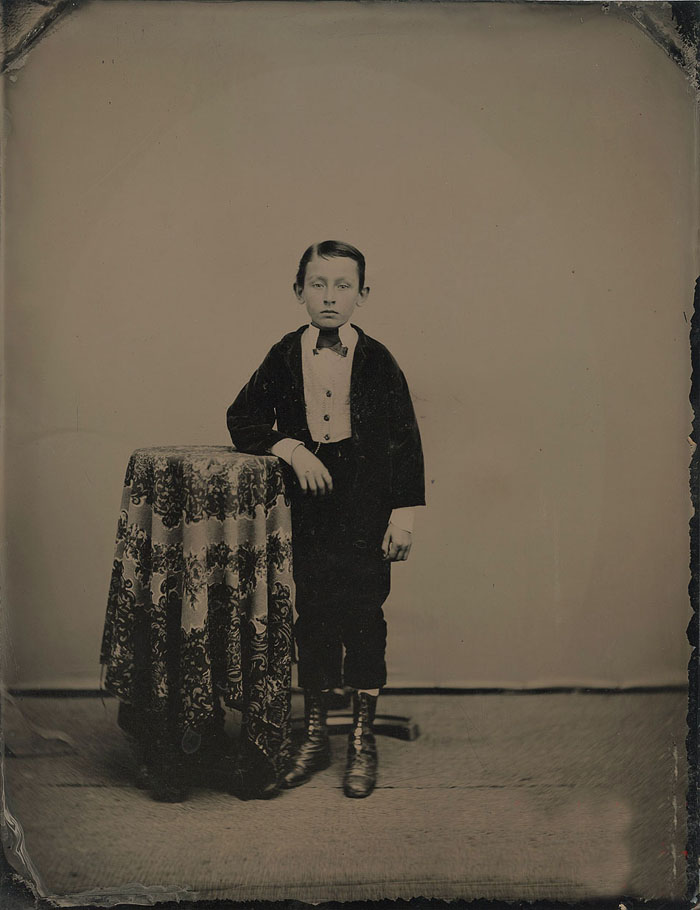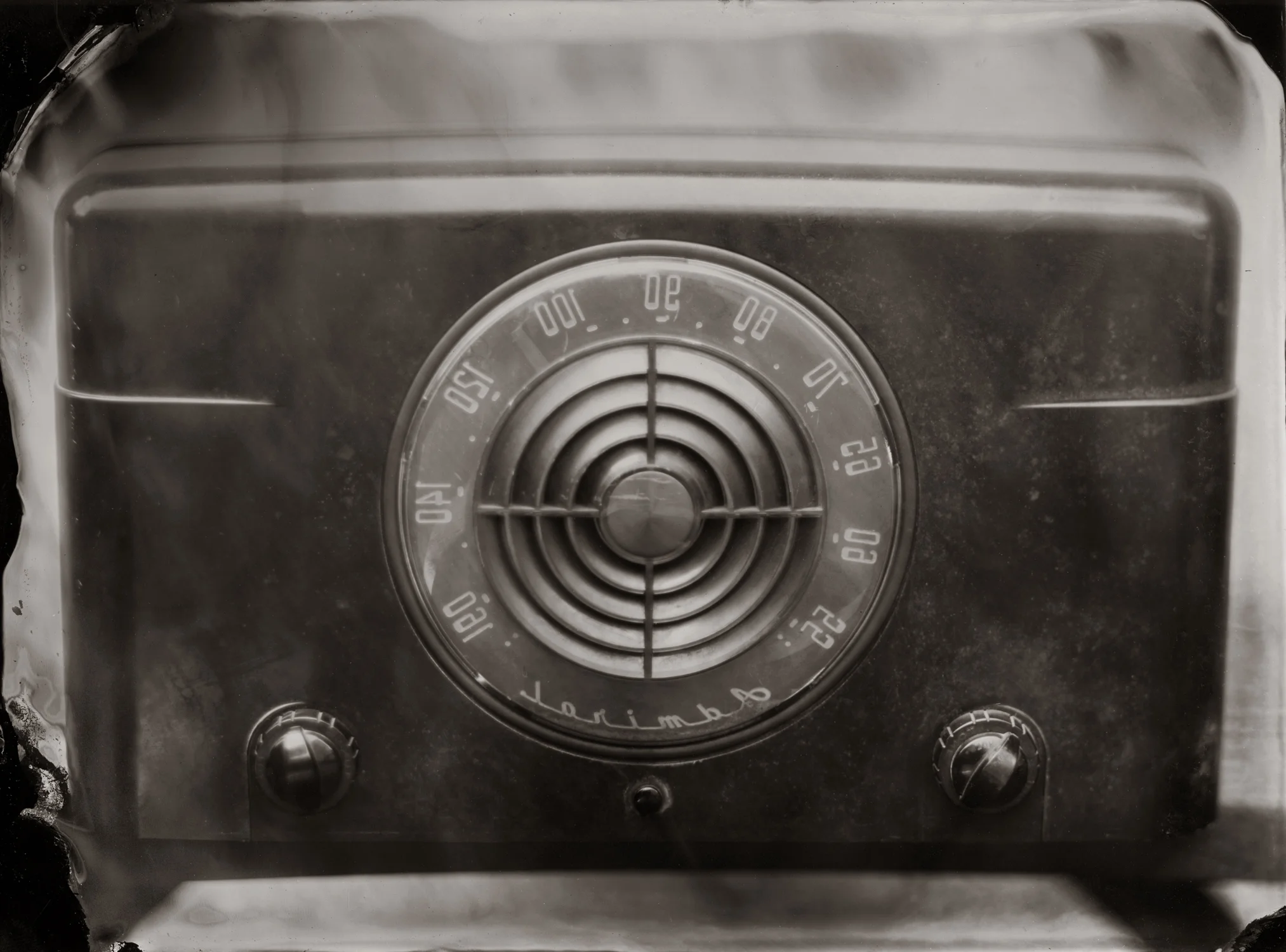 I love this cabinet card. It is unlike any I've seen before. It's a candid studio portrait of seven costumed young boys having a good time. I imagine there was some directive from the photographer involving pointing, but overall they just look like kids enjoying being kids.
I love this cabinet card. It is unlike any I've seen before. It's a candid studio portrait of seven costumed young boys having a good time. I imagine there was some directive from the photographer involving pointing, but overall they just look like kids enjoying being kids.
In most Victorian studio portraits (even the more playful and casual tintypes) people don't smile very often. And if they are smiling, it is usually a demure one, and not a "show your pearly whites" toothy grin that people are accustomed to now. One reason for this is that dental care was not so great in the 19th century so people might have preferred to hide their teeth.
Another reason is that exposure times were longer during the first few decades of photography, therefore people had to strike a pose and freeze it for a spell. This necessitated a head brace to keep the sitter's head still, and the base of these stands is often visible behind the sitter's feet. A big grin is hard to hold for longer than a few seconds without starting to look like a grimace.
Also, photography came on the heels of a long tradition of painted portraiture, and was most certainly influenced by the popular aesthetics that preceded it. You do not see large smiles in the painted portraits either.
At the time of this posting, this unusual find is for sale at Dennis A. Waters Fine Daguerreotypes. The tintype below can also be found there, but it has already been sold. Note the stand behind the boy's feet and the faint oval marking indicating the presence of a mat at some point.

